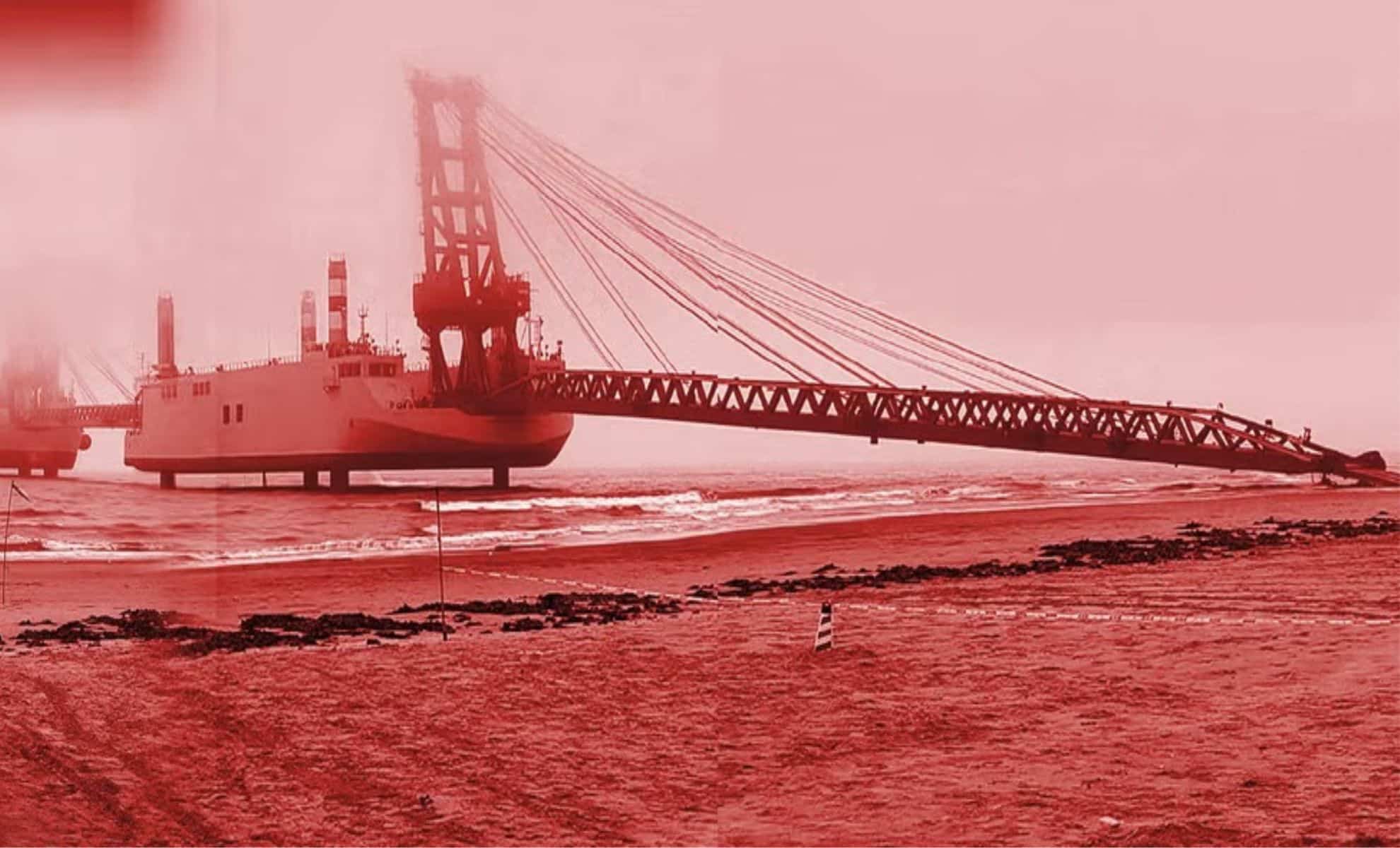China is reportedly developing a new class of amphibious platforms known as Shuiqiao—translated as “water bridges”—to facilitate a potential future invasion of Taiwan. These modular barges are designed to support the rapid deployment of heavy vehicles across difficult coastlines, marking a strategic evolution in amphibious warfare tactics. Their design draws inspiration from a pivotal moment in World War II: the 1944 Normandy landings.
Wwii Tactics Revived with a Modern Twist
The design concept behind these new amphibious barges harkens back to the Mulberry harbors, temporary floating structures used by Allied forces during the D-Day landings. Back then, these artificial ports allowed the rapid unloading of troops and equipment onto French beaches, avoiding the need for intact harbors.
Today, China’s adaptation of that concept is embodied in the Shuiqiaos. These platforms are tailored to overcome one of the oldest and most complex military challenges: unloading large, heavy equipment from ships onto shallow or rocky shores where port infrastructure is lacking.
Unlike traditional landing craft, which have limited carrying capacity, Shuiqiao barges are designed to handle tanks, armored vehicles, and troop carriers—at scale.


Engineering the Bridge from Sea to Shore
The Shuiqiao system is not just a barge—it’s a dynamic piece of marine engineering. Each unit is equipped with hydraulic legs known as pilotis, which anchor the barge to the seabed at depths reaching 30 meters.
To maintain stability amid waves and currents, the system uses spudcans, a type of anchoring technology also found in offshore drilling platforms. What sets these platforms apart is their ability to interconnect.
Once deployed, multiple Shuiqiaos can be linked to form a continuous floating bridge, creating a stable corridor from ship to shore. The largest known variant, the Shuiqiao-185, features side and rear ramps capable of handling dozens of military vehicles simultaneously.
Each barge is also equipped with engines and radar systems, giving them a degree of autonomy and the flexibility to adapt to different landing environments.
A Tailored Solution for Taiwan’s Rugged Coast
Taiwan’s geography presents a unique obstacle for any military assault. Much of its coastline is rocky, steep, or features shallow beaches, making amphibious landings risky and logistically complicated. Traditional landing ships might struggle to approach or unload without significant risk of damage or delay.
The Shuiqiao platforms appear to offer a targeted solution. By forming a bridge directly from deep-sea vessels to the shore, these barges could bypass Taiwan’s natural defenses and enable a faster and more efficient deployment of troops and equipment.
Analysts suggest that this capability could give China’s People’s Liberation Army (PLA) a tactical edge in scenarios where speed and surprise are critical.
Risks and Tactical Challenges Remain
While the Shuiqiao project is a leap forward in engineering, it’s not without vulnerabilities. These large, slow-moving platforms would likely become high-priority targets in the event of open conflict. Protecting them would require layered defensive coverage, including anti-air, anti-submarine, and anti-missile systems.
Despite these risks, the development of Shuiqiaos signals a significant shift in China’s military posture. Rather than rely solely on overwhelming force, Beijing is investing in strategic tools that offer operational flexibility in contested environments. These “water bridges” could play a pivotal role in transforming a theoretical threat into a feasible operation across the Taiwan Strait.





